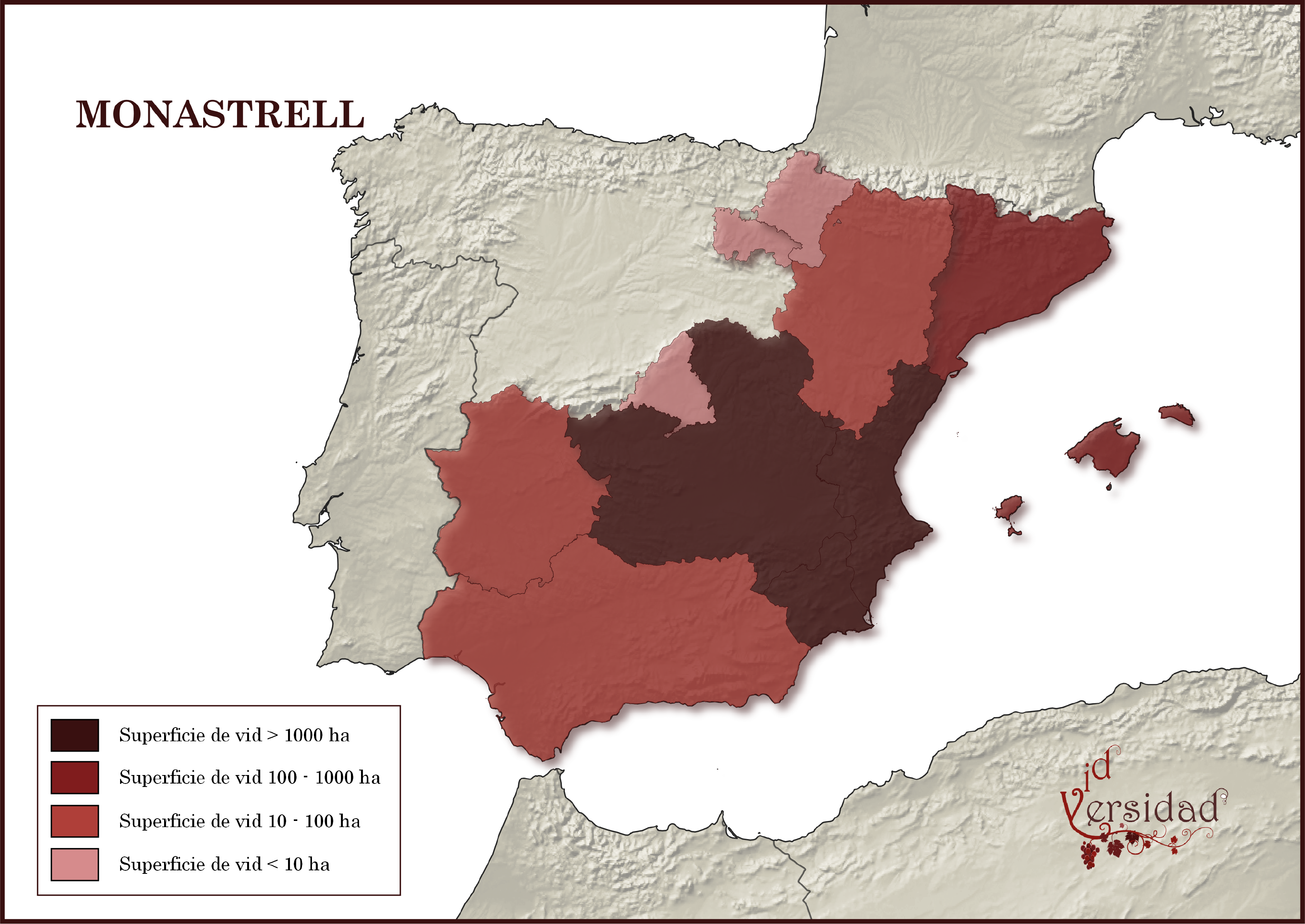
Monastrell
- Geographical distribution
- Agronomic features
- Phenology
- Date of budbreak: late
- Date of maturity: late
- Oenological features
- Synonyms
The Monastrell variety is widespread, mostly on central and Eastern Iberian Peninsula, occupying ca. 45.000 ha of vineyards. It is also cultivated, but less frequent, in the north, northeast and south. The DOs of Yecla (Murcia) and Jumilla (Murcia and Castilla La-Mancha) stand out in terms of production, given that Monastrell is considered the preferred red variety in these two winegrowing regions.
It is sensitive to the downy mildew (Plasmopara viticola), European grapevine moth (Lobesia botrana) and acid rot. It is moderately susceptible to the oïdium (Uncinula necator) and the mites. It is very demanding of magnesium, especially during budbreak, and in potassium during latter phases. It is very resistant to spring frosts, droughts and winds, but it does not tolerate dry winds. It does not endure herbicides well, especially the simazine.
Its wines are rich in alcohol, very pigmented, tannic, structured and rough in youth, so they need a weak acidity ageing.
Alcayata (AB), Del Reyno (MU), Garnacha (A, SG), Garrut(T), Mandó (PM), Morviedro (V), Mourvedre (FR)